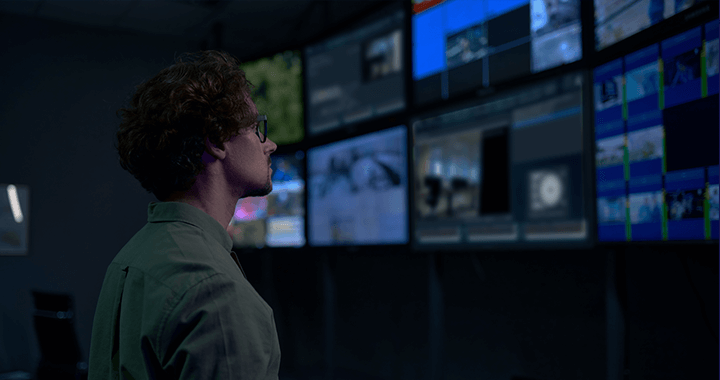Your sites are increasingly equipped with Security-Safety systems such as access control, CCTV, alarm systems, etc. These systems are often installed on an ad hoc basis, as and when required, resulting in a wide variety of solutions being implemented.
This diversity makes it difficult for the operator to have a clear view of the situation, as he must constantly correlate information from different systems. It is also difficult to share this view because it is not centralised. Bringing all this information together and making the best use of it in the event of an incident is a key challenge.
This is why Codra has developed a Security-Safety Hypervision solution to provide operators with a unified view and centralised control of the many systems and devices in the field.
Security-safety in Panorama
The security features built into the Panorama SCADA platform are as diverse as the disciplines and systems within the sector.
For example, Panorama interfaces with video management systems (VMS) such as Genetec, Geutebrück and Milestone. From the hypervisor, it is possible to take full advantage of their capabilities, such as viewing video streams, accessing replays and controlling cameras, as well as their image detection and analysis functions (threshold violations, human presence detection, etc.). It is not just a question of using the VMS, but of integrating with it; for example, an alarm activated in the Panorama solution is forwarded to the VMS and vice versa.
The Panorama platform also has SIP functionality, enabling it to manage a wide range of commercially available intercoms and audio/video systems.
Access control and intrusion detection systems can also be integrated.
In the near future, it will also be possible to connect directly to any OnVif (Open Network Video Interface Forum) camera.
Data correlation
Security-Safety data is combined with all other data on the Panorama bus. It is therefore accessible to all native product functions and can be used in conjunction with any other available data.
This other data can come from other security systems, FM/BMS, industrial systems, etc. It can be acquired via protocols such as OPC Classic, OPC UA, SNMP, IoT, BACnet, IEC61850, etc. or via Panorama’s extension mechanism.
This correlation of data in the Panorama platform enables to:
- Contextualise security information between systems (e.g. access control and cameras) and the environment (e.g. occupancy of premises provided by the BMS, occupancy of parking spaces in a car park, etc.).
- Create multi-system response scenarios (e.g. correctly position cameras according to intrusion events, automatically switch on lights in case of intrusion, adjust heating according to access control information, etc.).
- Notify users using Panorama’s on-call function (e.g. send an SMS or phone call in the event of an incident, etc.).
- Analyse the operation of the installation using Panorama Historian (event and alarm statistics, etc.).
- Etc.
A single, unified graphical interface
All data can be displayed in fully customisable mimic diagrams that show data from all your systems. These can be in the form of plans, engineering drawings, management type HMIs or even GIS/GeoScada.
The same user interface can be used to present all the data, making it easier for users to assimilate.
This field information can also be associated with alarms to alert the operator to specific events. These events are managed through a lifecycle (starting, for example, with an acknowledgement request) and can be associated with response sheets.
In a nutshell
Panorama’s Security Hypervision adds value to all your data from existing systems by contextualising it. This helps operators gain a better understanding of the situation and respond more effectively when required (through automatic or manual responses). This in turn is a powerful tool for improving the security of your sites.







